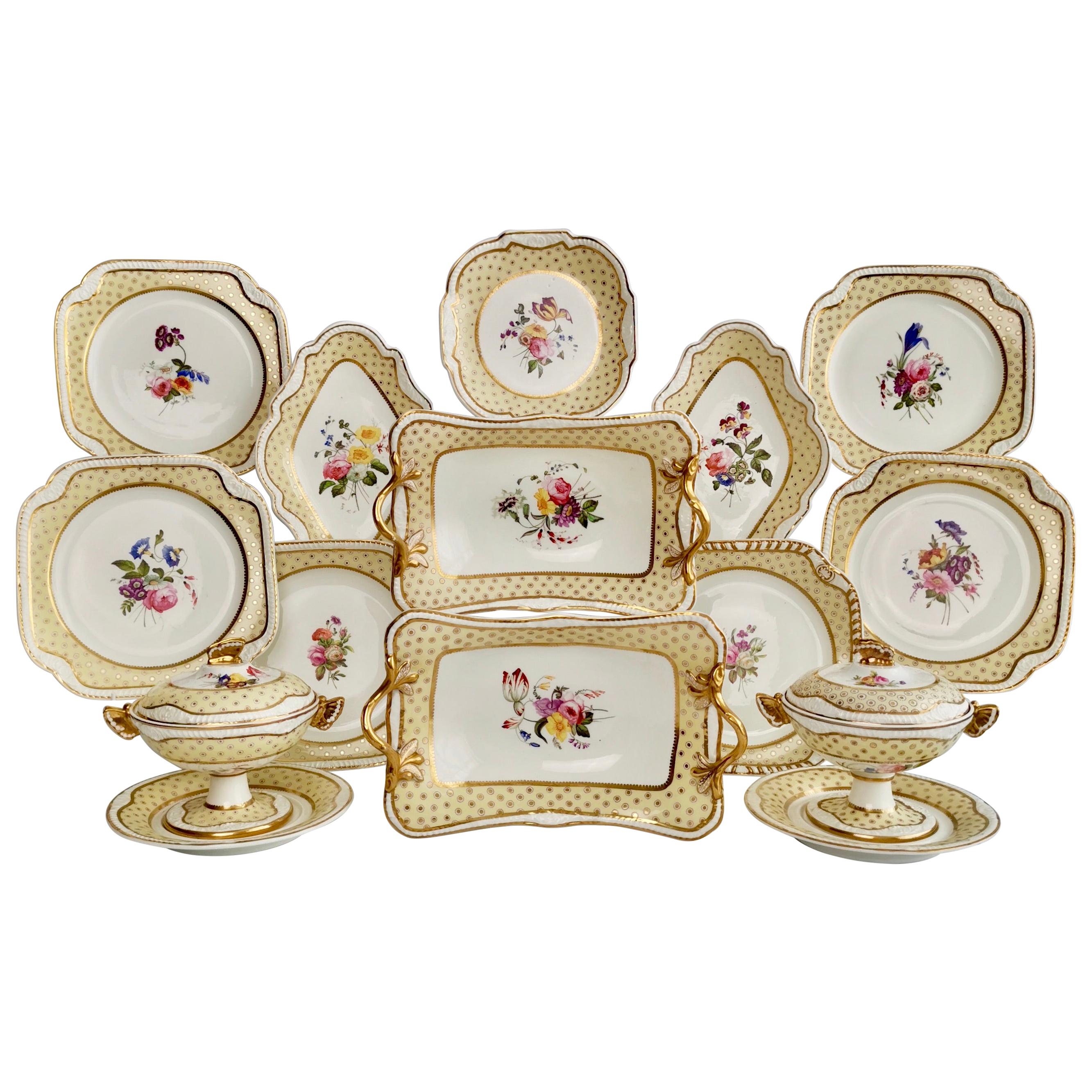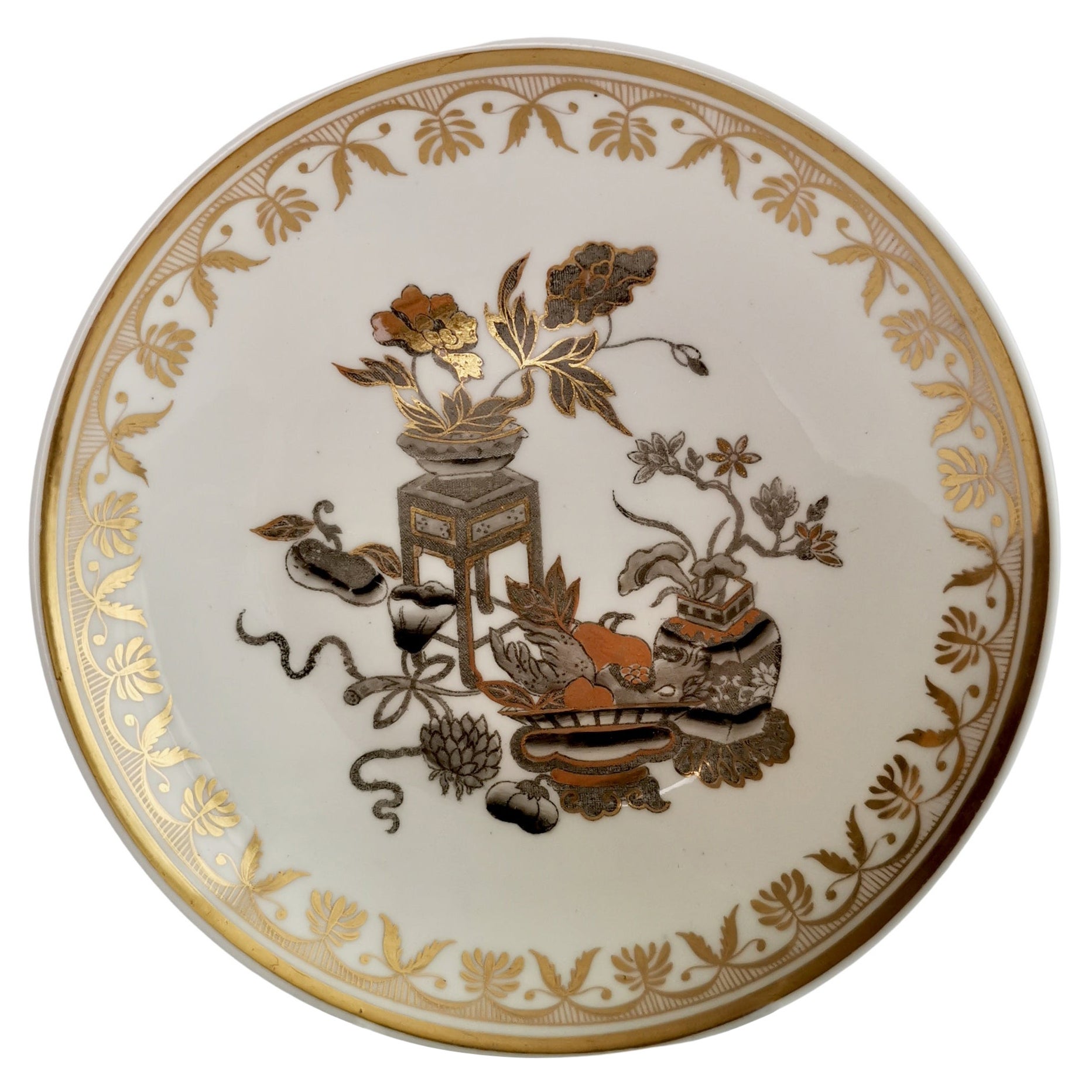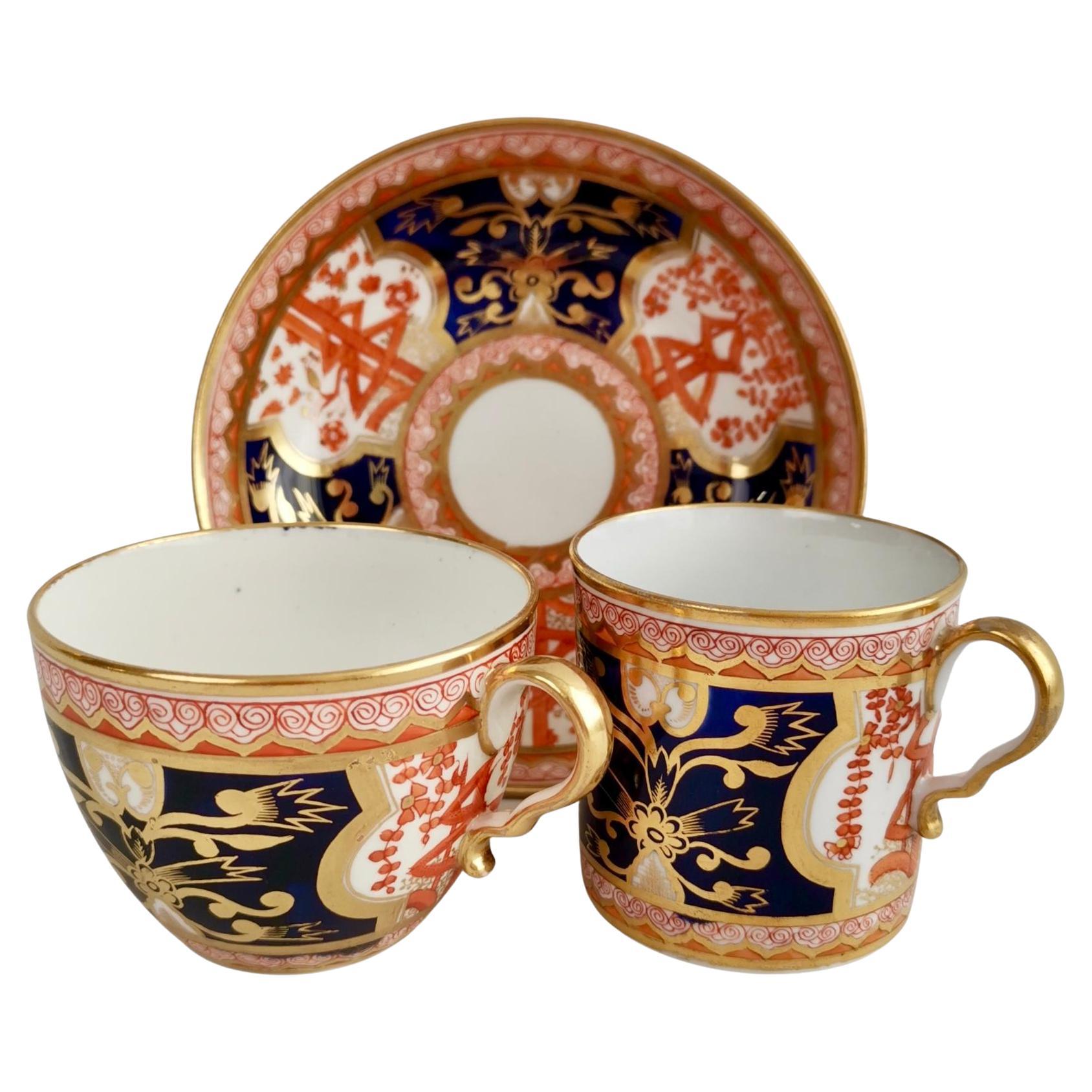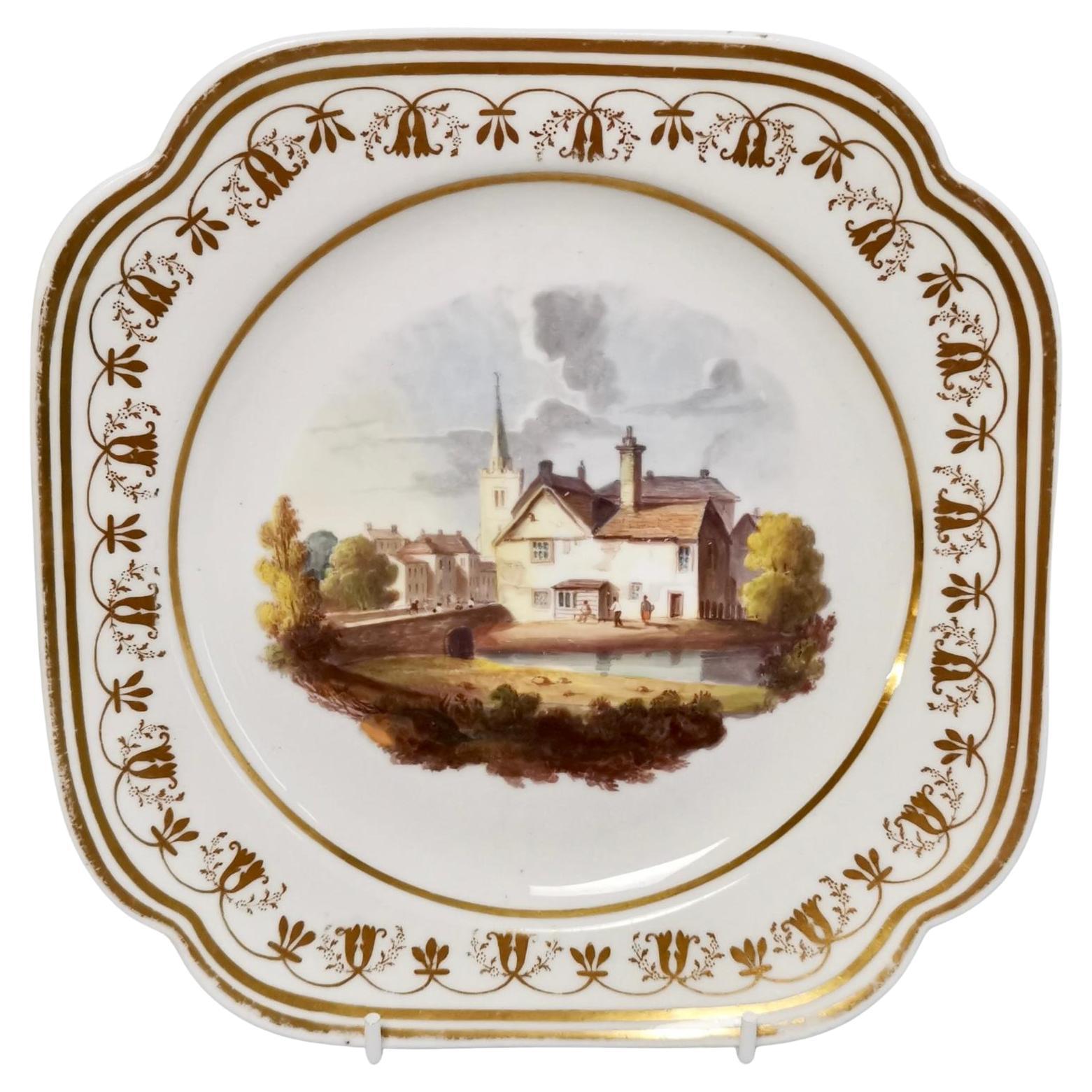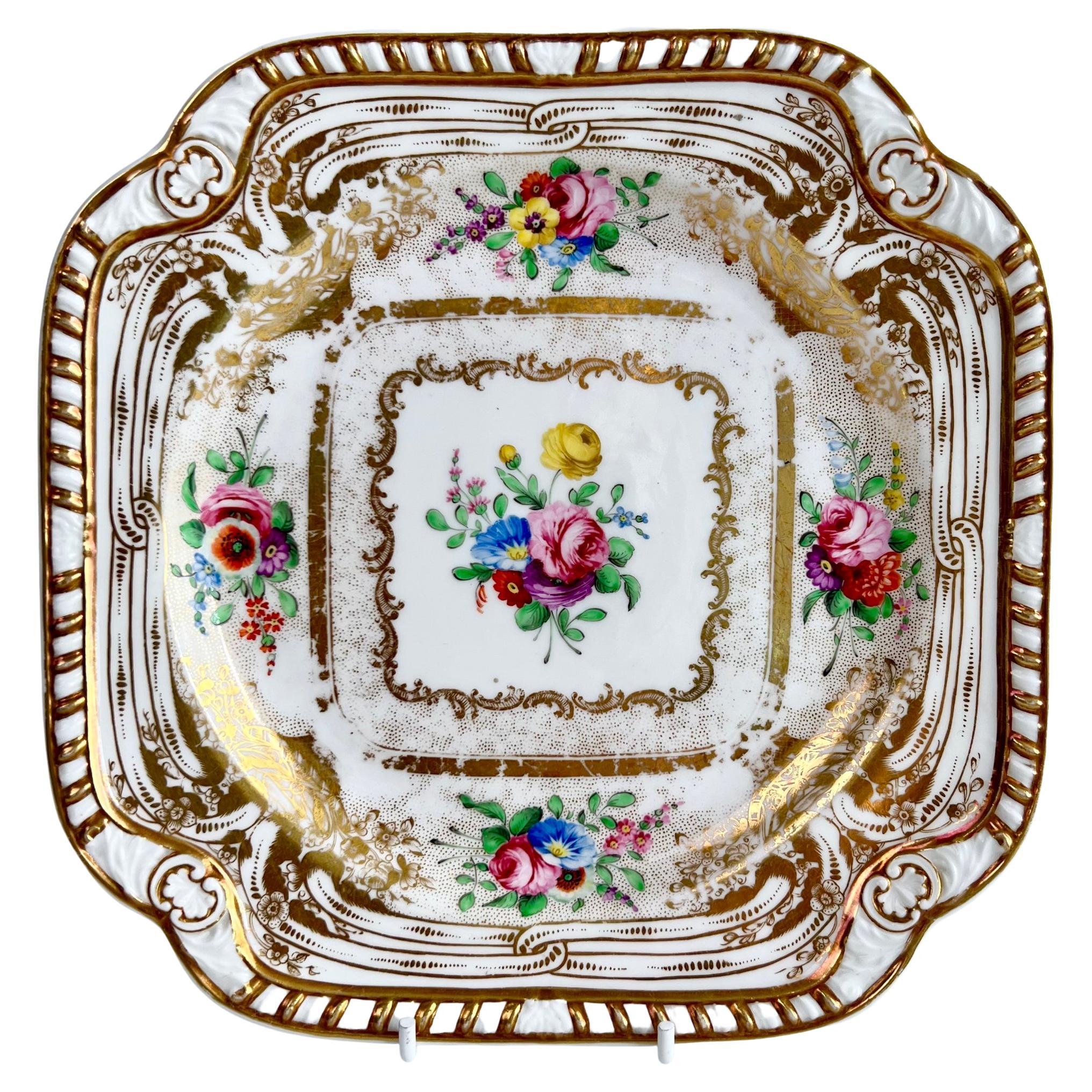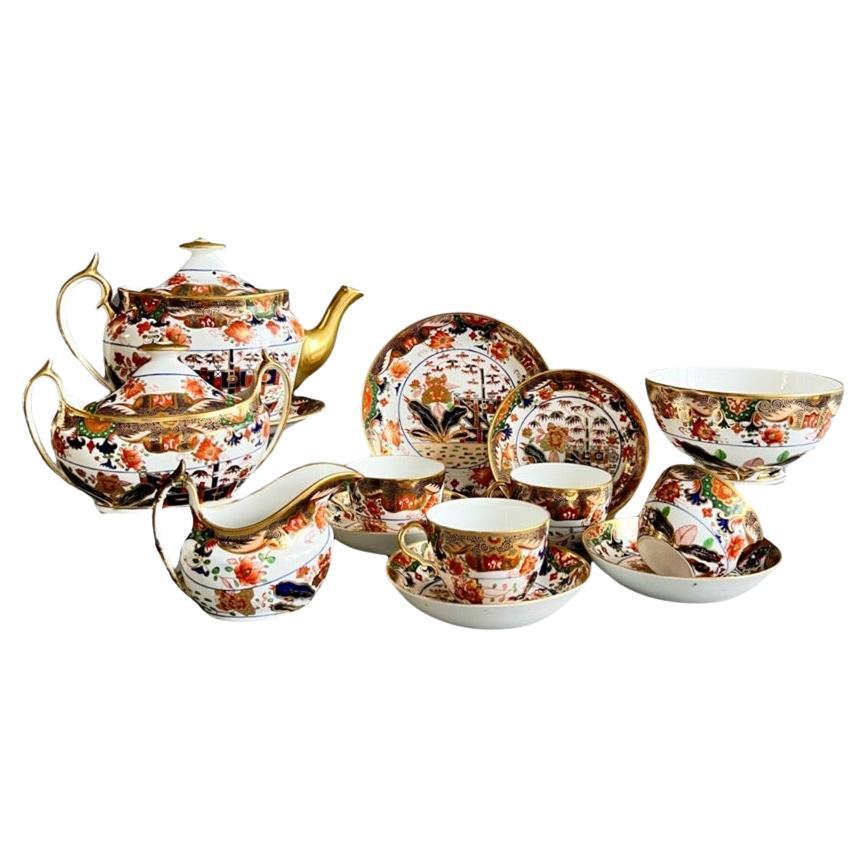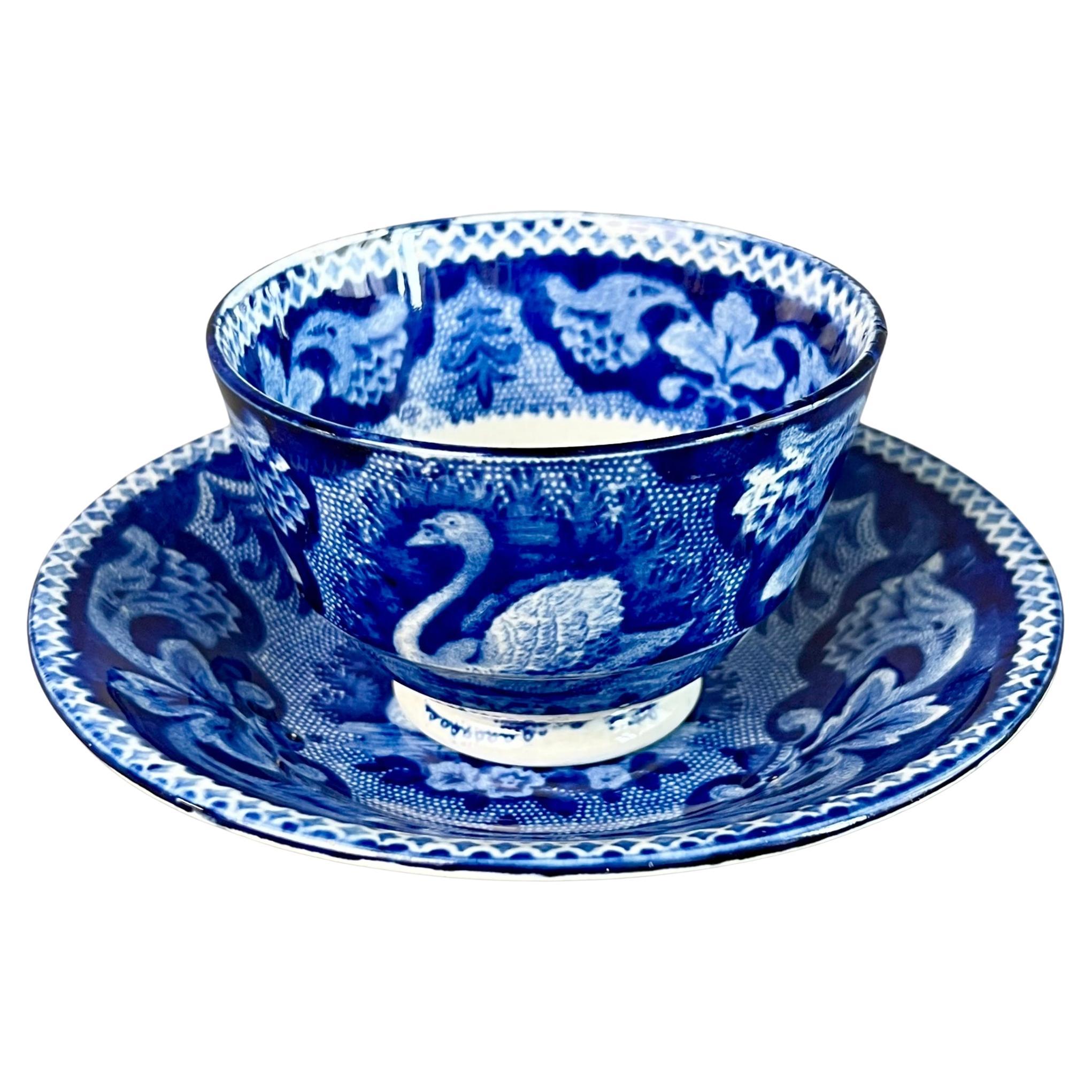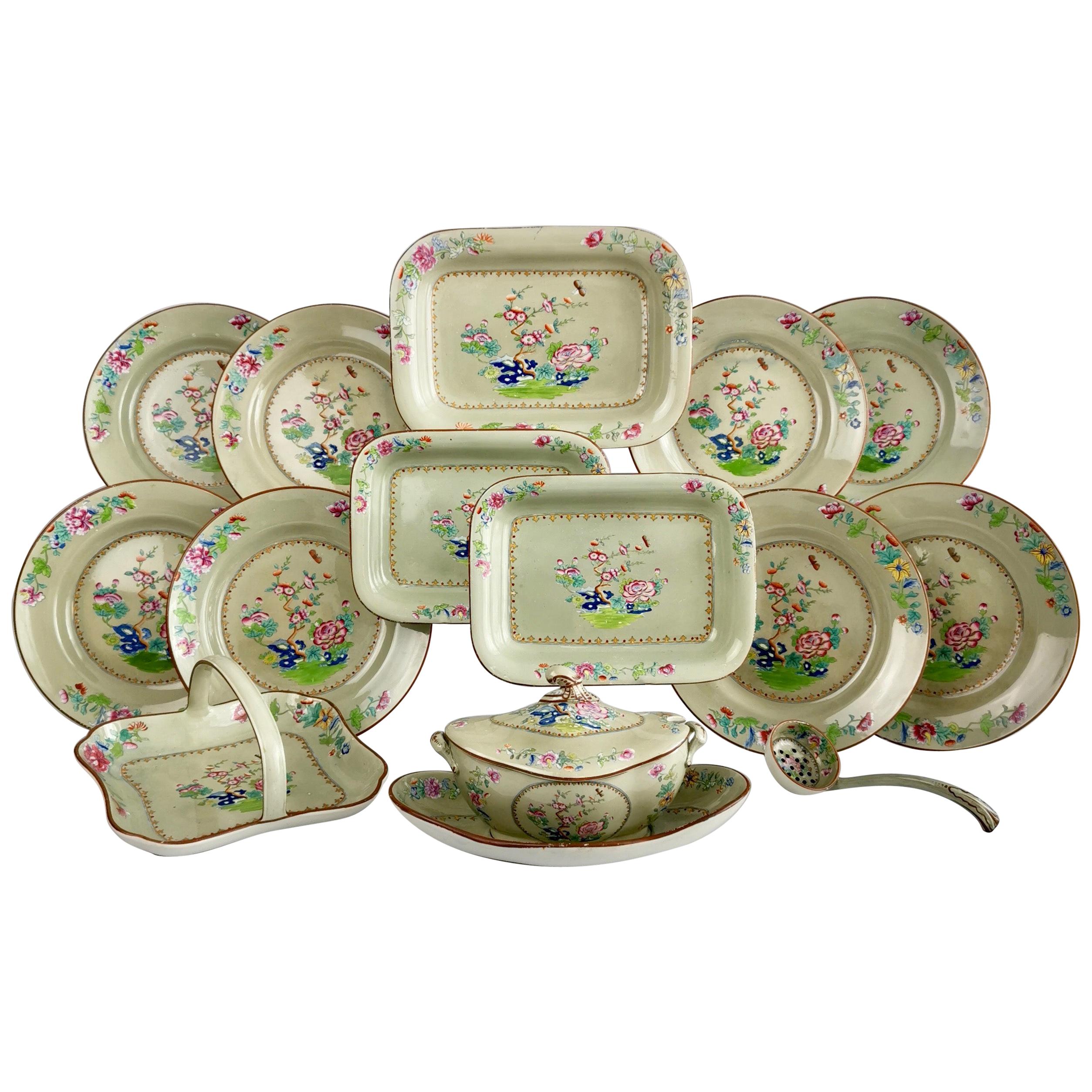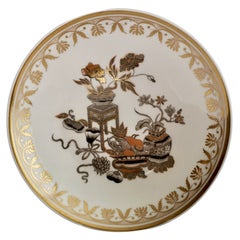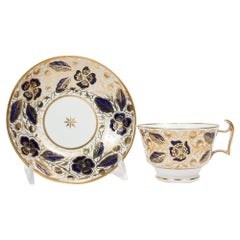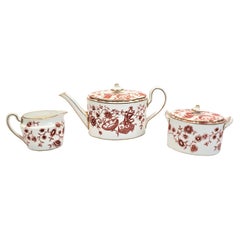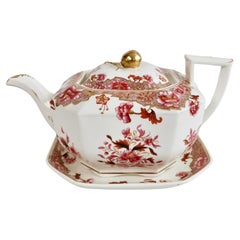
Spode Octagon Teapot on Stand, Felspar with Pink Chinoiserie, Regency 1821-1825
View Similar Items
Spode Octagon Teapot on Stand, Felspar with Pink Chinoiserie, Regency 1821-1825
About the Item
- Creator:Spode (Maker)
- Dimensions:Height: 1 in (2.54 cm)Diameter: 1 in (2.54 cm)
- Sold As:Set of 3
- Style:Regency (Of the Period)
- Materials and Techniques:
- Place of Origin:
- Period:
- Date of Manufacture:1821-1825
- Condition:Wear consistent with age and use. In perfect antique condition without damage, repairs, crazing or wear other than light rubbing to tip of spout.
- Seller Location:London, GB
- Reference Number:Seller: A-SPO861stDibs: LU4805128497512
Spode
Spode is one of the oldest and most distinguished of the great pottery companies of Staffordshire, the time-honored home of English ceramics. The firm’s blue and white bone china transferware is a timeless classic. Spode dishes compose the sort of elegant dinner service that most of us envision on a traditional holiday table.
The company was established in 1770 in Stoke-on-Trent by Josiah Spode, a friend and neighbor of another estimable English ceramist, Josiah Wedgwood. The Wedgwood firm first came to prominence for its tableware, which quickly gained favor in aristocratic households throughout Britain and Europe.
Spode was particularly known for two technical achievements in the firm’s early decades. The first was to develop a standard formula for the making of bone china — a type of porcelain (made with a mixture of bone ash, minerals and clay) that is dazzlingly white and so strong it can be used to create very thin translucent plates and vessels.
The other advancement was to perfect the making of transferware. That process involves the transfer of pictorial images inked on tissue paper — such as the garden scenery in the famous Willow dish patterns — onto ceramics that are then sealed with a glaze.
From the 1820s onward, Spode enjoyed tremendous success both in Britain and elsewhere owing to the beauty and vitality of its decorative imagery. By some counts, Spode created more than 40,000 patterns in the 19th century.
In 1833, following the sudden death of Josiah Spode III, business partner W. T. Copeland took over the company and changed its name to Copeland Spode (it later changed again, this time to W. T. Copeland and Sons). Collectors regard Copeland-marked pieces as Spode china. The Spode brand was revived in 1970.
Many favorite Spode patterns — among them Blue Italian, Indian Tree, Greek and Woodland — date to the company’s early years. Spode’s most popular pattern, Christmas Tree, was introduced in 1938.
Prices for antique and vintage Spode china vary widely, based on the size of the service, its condition and the pattern. An antique dinner service for 12 people or more, in good repair and complete with cups and serving dishes, will generally cost between $10,000 and $20,000. Such Spode services become heirlooms — a proud and timeless addition to a family’s table. And as you will see on these pages, Spode’s rich and varied wares offer a visual feast in and of themselves.
Find Spode serveware, ceramics and decorative objects on 1stDibs.
- Spode Orphaned Porcelain Saucer, Chinoiserie Gilt Potted Flowers, Regency ca1820By SpodeLocated in London, GBThis is a beautiful deep orphaned saucer made by Spode around 1820. The saucer is decorated with a gorgeous Chinoiserie pattern of a group of potted flowers in gilt and grey. The sau...Category
Antique 1820s English Regency Porcelain
MaterialsPorcelain
$200 Sale Price20% OffFree Shipping - Spode Teacup and Saucer, Red, Gilt with White Chrysanthemum, Regency ca 1810By SpodeLocated in London, GBThis is a beautiful teacup and saucer made by Spode around 1810. The set is shaped in the "bute" shape and decorated with a bright Neoclassical pattern of a warm red ground with gilt...Category
Antique 1810s English Regency Porcelain
MaterialsPorcelain
- Spode Porcelain Teacup Trio, Lavender Blue with Flower Sprays, Regency ca 1815By SpodeLocated in London, GBThis is a beautiful "true trio" consisting of a teacup, a coffee cup and a saucer, made by Spode in about 1815. It is decorated with pattern 2234 with a striking lavender or periwinkle blue border and finely painted flower sprays. In the late 18th and early 19th Century a "true trio" is how cups and saucers were sold; as you would never drink tea and coffee at the same time, why invest in an extra saucer? Josiah Spode was the great pioneer among the Georgian potters in England. Around the year 1800 he perfected the bone china recipe that has been used by everyone ever since, and he was also the leading potter behind the technique of transferware, making it possible for English potters to replace the import of Chinese china that had come to an end around that time, with their own. This was fundamental to a thriving industry that would last for about 150 years and provide half the world with their tableware. This set is made in the famous "London" shape, which was brought out by Spode in 1812 and was quickly copied by all other makers. It then remained the most popular shape for about 10 years. The set is potted in fine white porcelain - by the year 1810 Spode had perfected his recipe for bone china and it became beautifully smooth, white, thin and translucent. All three items are marked with the red hand painted SPODE mark and the pattern number 2234. CONDITION REPORT The set is in excellent antique condition without any damage, repairs or crazing. There is some minimal wear as visible in the pictures...Category
Antique 1810s English Regency Porcelain
MaterialsPorcelain
$400 Sale Price / set20% OffFree Shipping - Spode Porcelain Teacup, Imari Tobacco Leaf Pattern 967, Regency ca 1810By SpodeLocated in London, GBThis is a beautiful teacup and saucer made by Spode in about 1810. The set is decorated with the famous Imari Tobacco Leaf pattern 967, which was first introduced by Spode in 1806. ...Category
Antique 1810s English Regency Porcelain
MaterialsPorcelain
- Spode Porcelain Teacup Trio, Red Imari Dollar Pattern, Regency, ca 1810By SpodeLocated in London, GBThis is a beautiful orphaned teacup made by Spode in about 1810. It bears a beautiful Japanese-inspired Imari pattern. Spode was the great pioneer among the Georgian potters in England. Around the year 1800 he perfected the bone china recipe that has been used by British potters ever since, and he was also the leading potter behind the technique of transferware, making it possible for English potters to replace the Chinese export china, which had come to an end around that time, with their own designs. This was fundamental to a thriving industry that would last for about 150 years and provide half the world with their tableware. Spode porcelain is regarded as one of the highest quality porcelains around; for a soft-paste porcelain it is surprisingly hard and fine, and has a wonderful bright white colour. The pattern on this can is called "Dollar" pattern, a very famous pattern that was used by English potters in the 18th and early 19th Century. It is obvious why it is called “dollar” - but its origin is less obvious! It is thought that this pattern was derived from a very old Chinese pattern depicting a tree with elaborate foliage that hides a Chinese character representing longevity or happiness. Traditionally, this went with a an image called “Taotie”, which was used on very ancient bronze vases...Category
Antique Early 1800s English Regency Porcelain
MaterialsPorcelain
$420 Sale Price / set20% OffFree Shipping - Spode Felspar Porcelain Plate, Landscape Painting, Regency ca 1822By SpodeLocated in London, GBThis is a dessert plate made by Spode in about 1822, which was the Regency era. The plate is made of Felspar porcelain and decorated with a beautiful hand painted landscape scene. The plate would have belonged to a large dessert service of which each piece had a unique landscape; in fact I sold a dessert service in this pattern a while ago. Spode was the great pioneer among the Georgian potters in England. Around the year 1800 he perfected the bone china recipe that has been used by British potters ever since, and he was also the leading potter behind the technique of transferware, making it possible for English potters to replace the Chinese export china...Category
Antique 1820s English Regency Porcelain
MaterialsPorcelain
$320 Sale Price20% OffFree Shipping
- Antique Early 19th Century Spode Porcelain Pattern Number 2408 Tea Cup & SaucerBy SpodeLocated in Philadelphia, PAA fine antique Spode porcelain cup & saucer. Pattern no. 2408 Decorated throughout with a cobalt floral patttern and extensive gilding. Simply a great cup & saucer from Spod...Category
Antique Early 19th Century English Neoclassical Porcelain
MaterialsPorcelain
- Antique Royal Crown Derby Chinoiserie Styled Teapot, Cream & Sugar SetBy Royal Crown Derby PorcelainLocated in Hamilton, OntarioThis teapot and cream and sugar set were made by the well known Royal Crown Derby maker of England and dates to approximately 1850 and done in the period Chinoiserie style. The set i...Category
Antique Mid-19th Century English Chinoiserie Tea Sets
MaterialsPorcelain
- English Porcelain Covered Teapot and Stand, Worcester, circa 1765Located in New York, NYUnderglaze blue ground.Category
Antique 1760s English Tea Sets
MaterialsPorcelain
- Spode Indian Tree Cup and SaucerLocated in Asheville, NCThis is an absolutely fabulous antique Copeland Spode Indian tree cup and saucer. It is a spectacular example of Spode porcelain with rust and orange...Category
Antique 18th Century and Earlier English Porcelain
MaterialsPorcelain
- Bjørn Wiinblad for Rosenthal, Lotus Porcelain Service, Teapot with HeaterLocated in Copenhagen, DKBjørn Wiinblad for Rosenthal. Lotus porcelain service. Teapot with heater for tealight candles and creamer decorated with pink lotus leaves. 1980s. ...Category
Vintage 1980s German Modern Porcelain
MaterialsPorcelain
- Early 19th Century Wedgwood Porcelain Biggin Teapot with Blue Glazed AccentsBy WedgwoodLocated in Middleburg, VA1820 Wedgwood Biggin teapot. Dating to the 1820s this is a spectacular and elegant biggin. This is named for Mr. Biggin, who developed the form in 1817. Biggins can be used as teapots or coffee pot, with the upper part holding tea leaves or coffee grounds and having two perforated strainers through which boiling water is poured. The lid has a small round button handle with a hole in the center to vent steam. Wedgwood decorated the lid, upper section and lower body with applied blue glaze, finely detailed floral bands. The body design is the same Wedgwood used...Category
Antique Early 19th Century English Porcelain
MaterialsPorcelain
